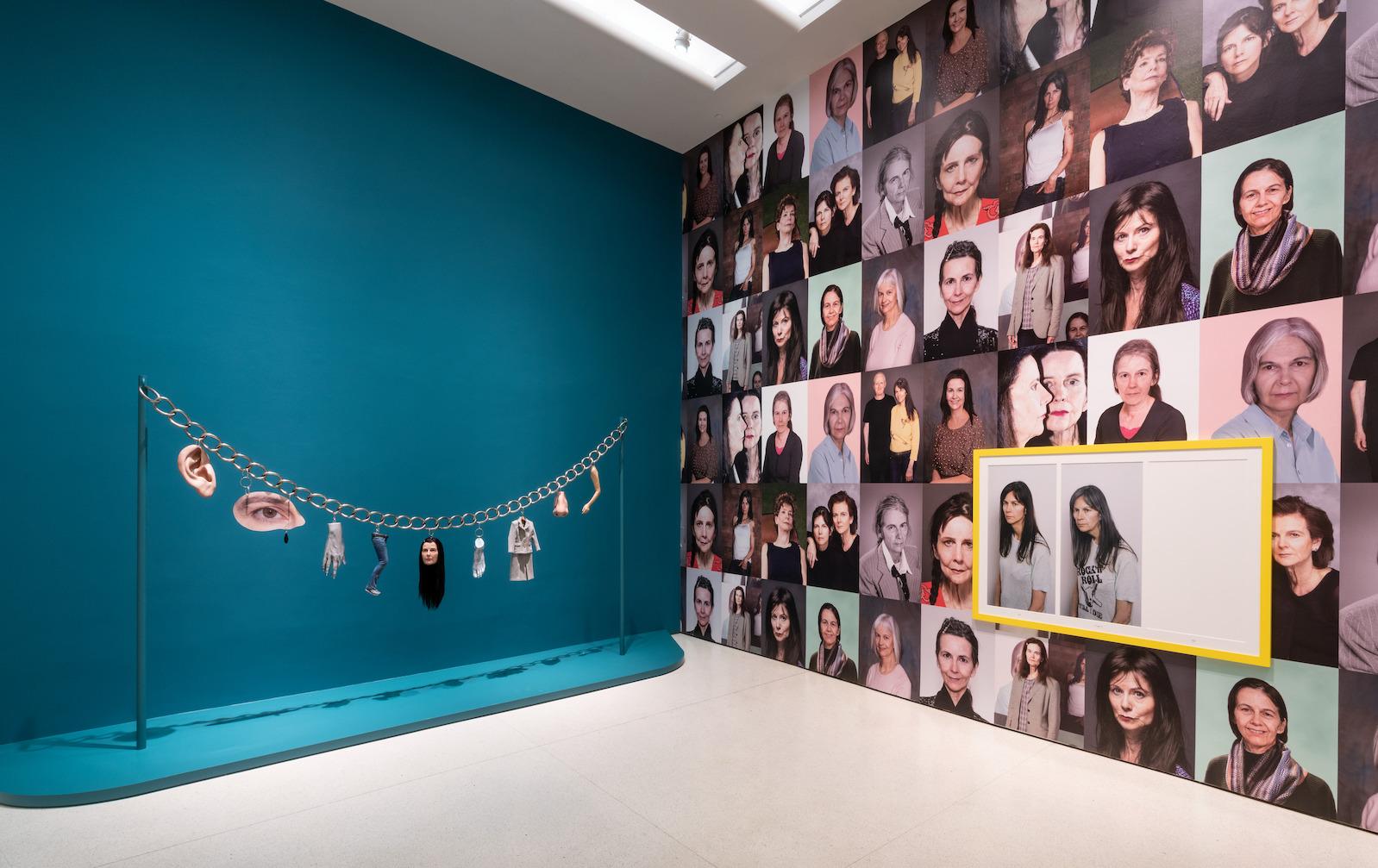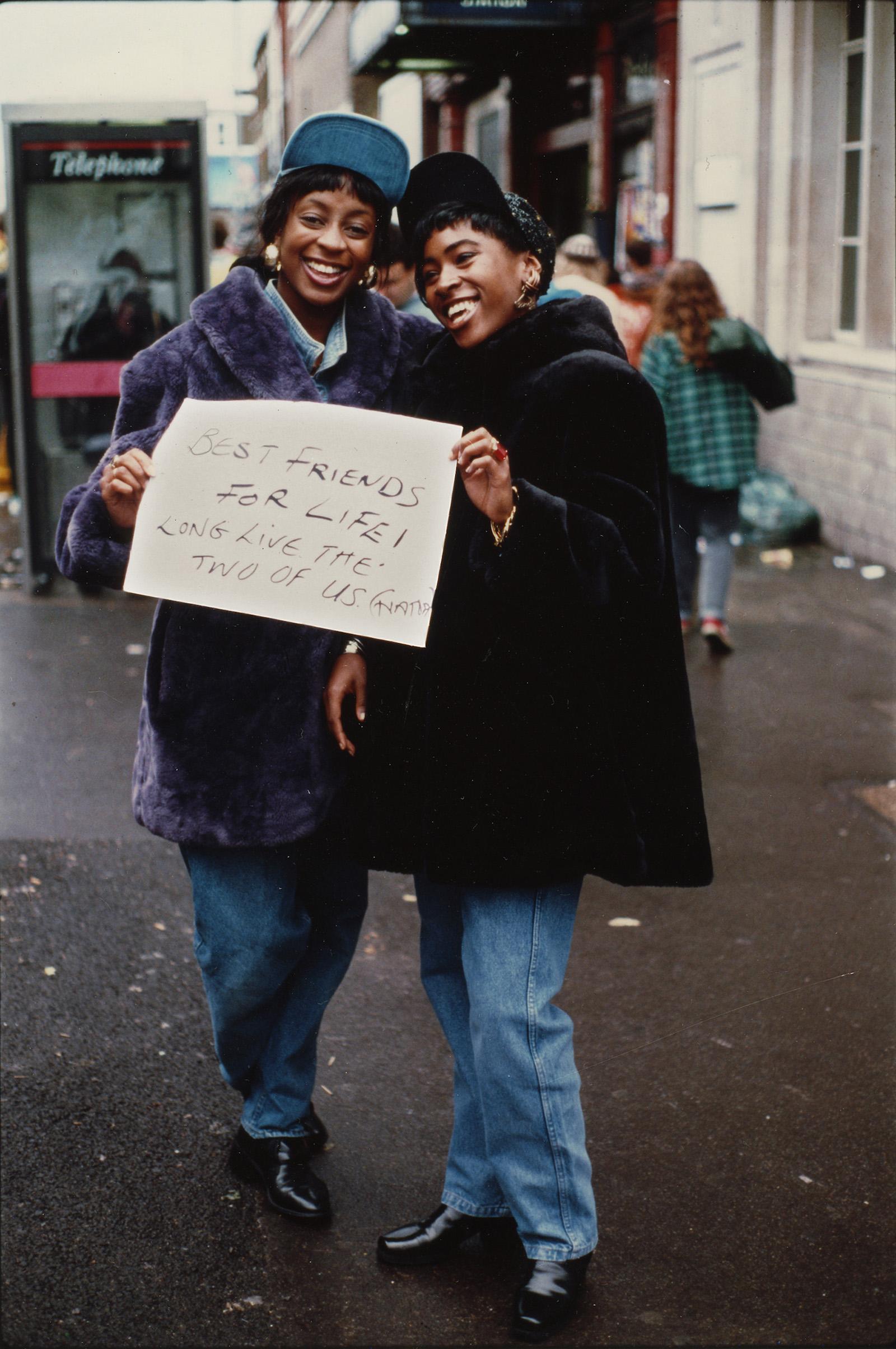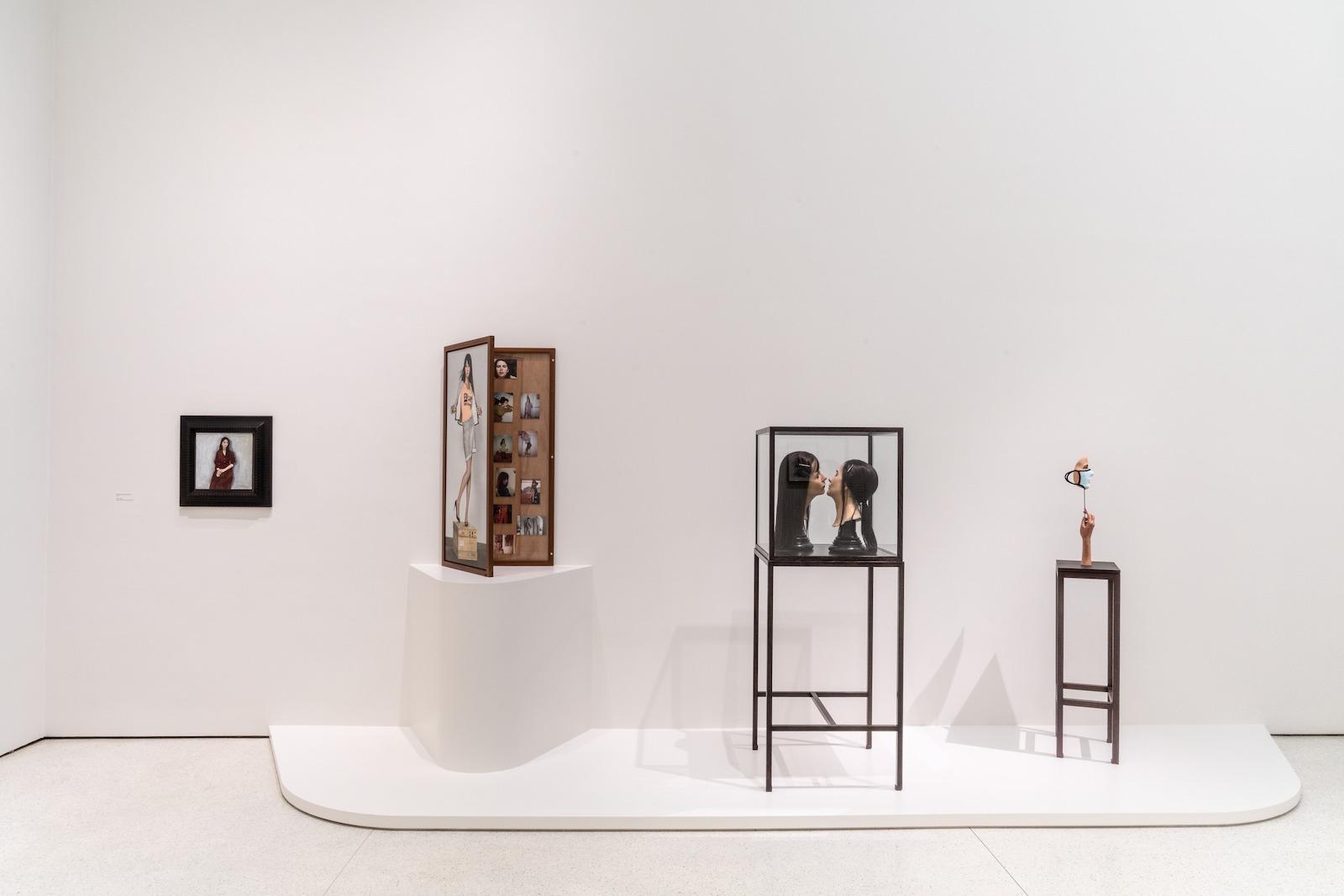One image is of a young white man in business attire who, despite the advantages conferred on him by his gender and race, holds a sign reading, “I’m desperate.” Key to the piece is his expression: A tight smile that reveals no real emotion other than a guarded awareness of the camera. The photo is less of a portrayal than it is an attempt to capture someone at the instant he composes himself for public consumption.
For most of the past three decades, Wearing has focused on exploring the gap between our private lives and the way we self-reflexively fashion alternative selves (masks if you will) to confront the world. As Wearing’s work notes, how we’ve done so has been increasingly influenced by mass media to the point where we’ve essentially become the sum total of the content we consume.
Familial relationships likewise shape our personae, a dynamic Wearing considers in a couple of photographic series in which she takes a trip through the uncanny valley by depicting herself as different members of two families: Her actual one (parents, grandparents, siblings, etc.); and another, “spiritual” one composed of famous artists who inspired her (Diane Arbus, Robert Mapplethorpe and Andy Warhol, among others). In both, she stares out of photos of each subject through eyeholes cut from the print in spooky mansion style, suggesting that we are who we’re haunted by.
Elsewhere, a video installation features actors portraying a mother and daughter respectively, with the former abusing the latter by grabbing her by the hair and dragging her around a room. The film, which prudently comes with a trigger warning, is shot in black-and-white, making it resemble a Sadean take on postwar kitchen sink drama.































